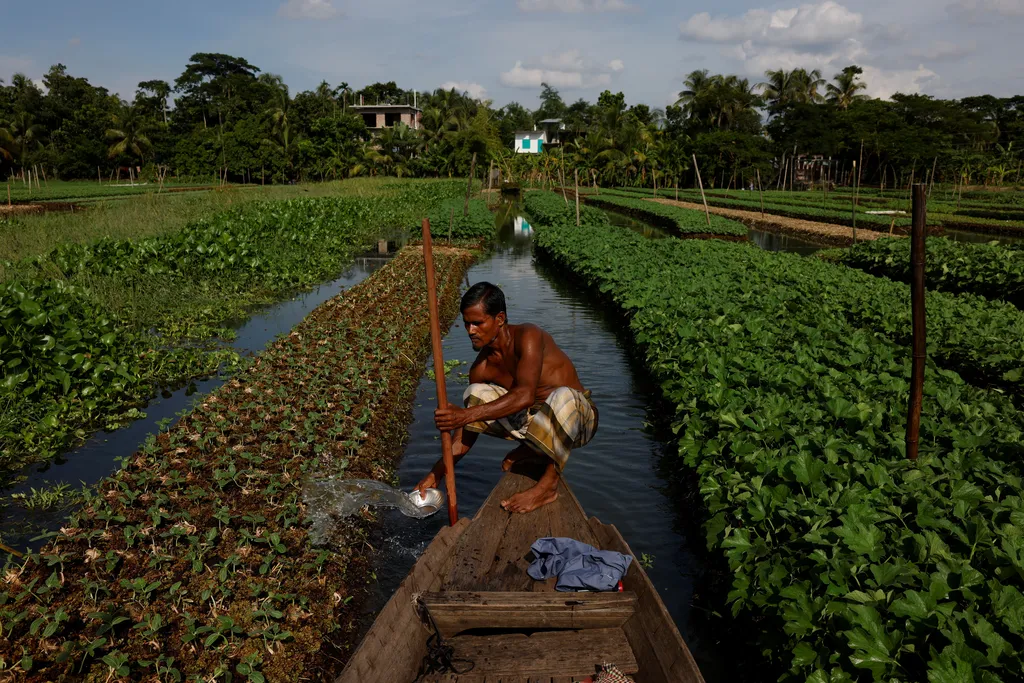In the heart of Bangladesh, a groundbreaking study led by Md. Raihanul Islam from the GIS and Proximal Sensing Lab at Gazipur Agricultural University is reshaping the way we think about soybean farming under water-deficit stress. The research, published in the journal ‘Drones’ (translated to English), combines innovative biostimulants with cutting-edge remote sensing technology to tackle one of agriculture’s most pressing challenges: water scarcity.
Soybean, a crop of significant economic importance, often faces morpho-physiological setbacks due to water-deficit stress. Islam and his team explored the potential of seaweed extract (SWE) from Gracilaria tenuistipitata var. liui, a red seaweed, to mitigate these effects. “We aimed to evaluate soybean morpho-physiological traits under varying irrigation conditions and SWE application,” Islam explains. The study compared two irrigation levels—100% and 70% of the total crop water requirement (TCWR)—with and without the application of 5% SWE.
The results were striking. Principal Component Analysis (PCA) revealed that the 70% irrigation + 5% SWE treatment overlapped with the 100% irrigation treatment, indicating that SWE effectively mitigated water-deficit stress. This means that soybeans treated with SWE achieved morpho-physiological performance comparable to fully irrigated plants while using 30% less water. “This is a game-changer for precision agriculture,” Islam notes. “It allows us to maintain yield while significantly reducing water usage.”
The study also integrated unmanned aerial vehicle (UAV)-based remote sensing to monitor soybean health. By using simple linear regression models, the team found strong correlations between UAV-derived vegetation indices and field-measured physiological characteristics. For instance, the Normalized Difference Red Edge (NDRE) strongly correlated with stomatal conductance and photosystem II efficiency, while the Soil Adjusted Vegetation Index (SAVI) had the highest correlation with leaf relative water content.
The implications for the agricultural sector are profound. As water scarcity becomes an increasingly global issue, the ability to maintain crop yields with reduced irrigation is invaluable. “This research demonstrates how UAV and physiological data can be integrated to improve precision soybean farming and support sustainable soybean production under water-deficit stress,” Islam states.
The commercial impacts are equally significant. Farmers can adopt these techniques to enhance crop resilience and reduce water usage, leading to cost savings and improved sustainability. Moreover, the integration of remote sensing technology offers a non-destructive, cost-efficient way to monitor crop health, paving the way for more data-driven agricultural practices.
As we look to the future, this research could shape the development of new biostimulants and remote sensing technologies tailored to various crops and climates. The integration of these approaches not only supports sustainable agriculture but also aligns with the broader goals of environmental conservation and resource efficiency.
In the words of Islam, “This is just the beginning. The potential for these technologies to transform agriculture is immense, and we are excited to explore further applications and refinements.” With such innovative research, the future of sustainable farming looks brighter than ever.

